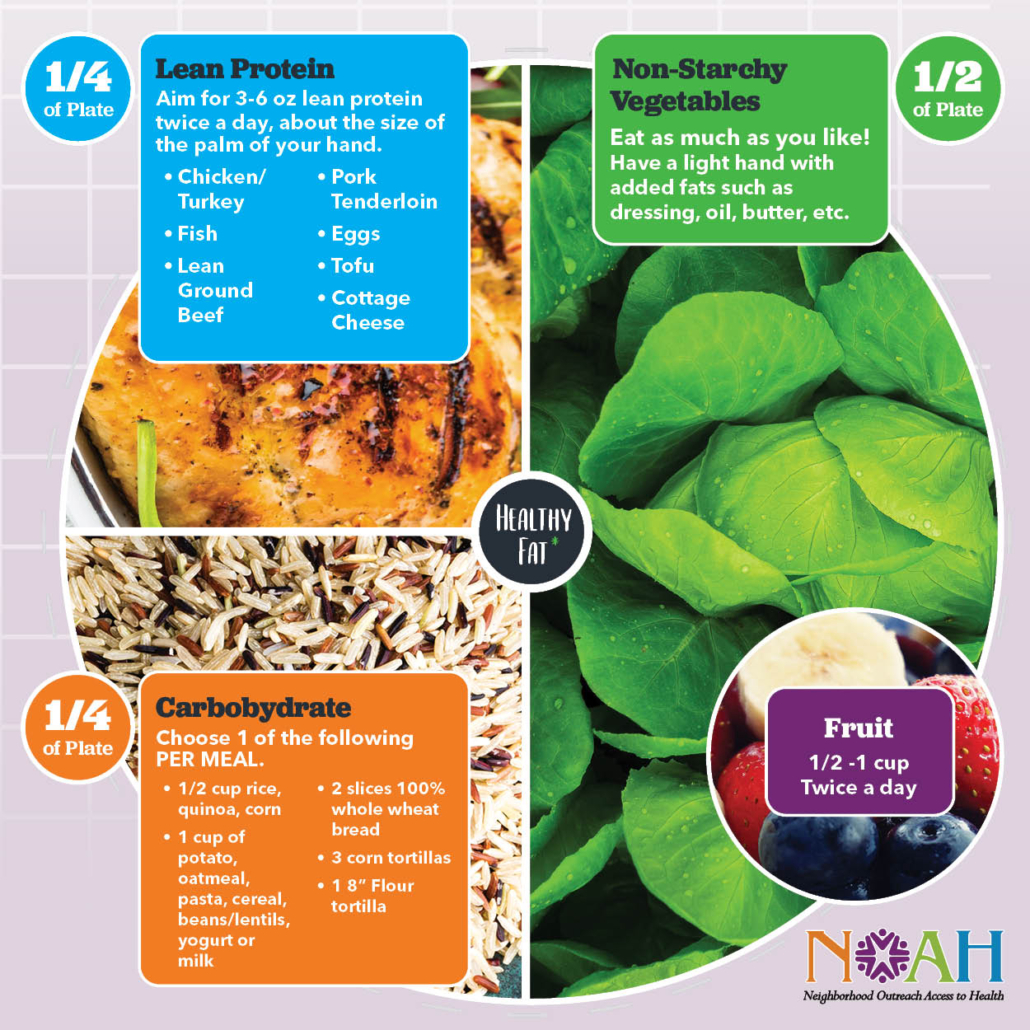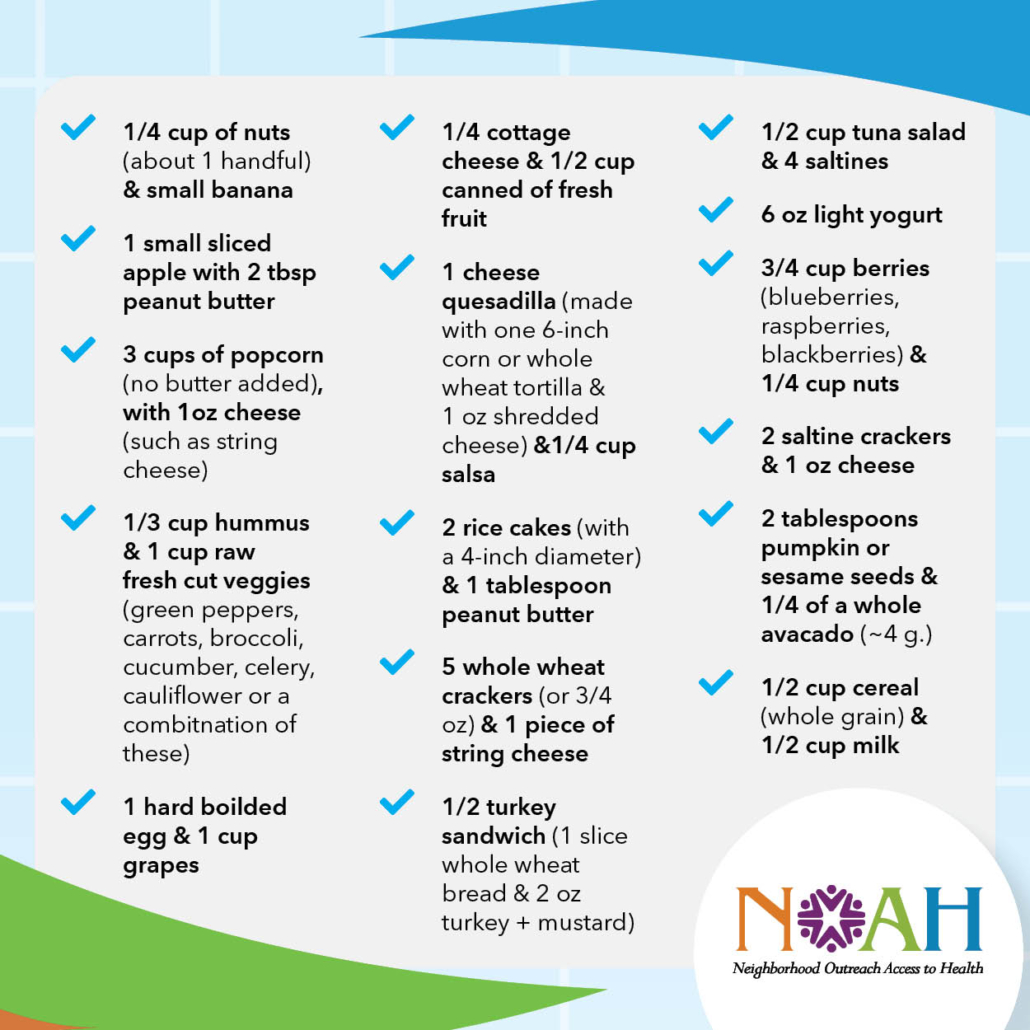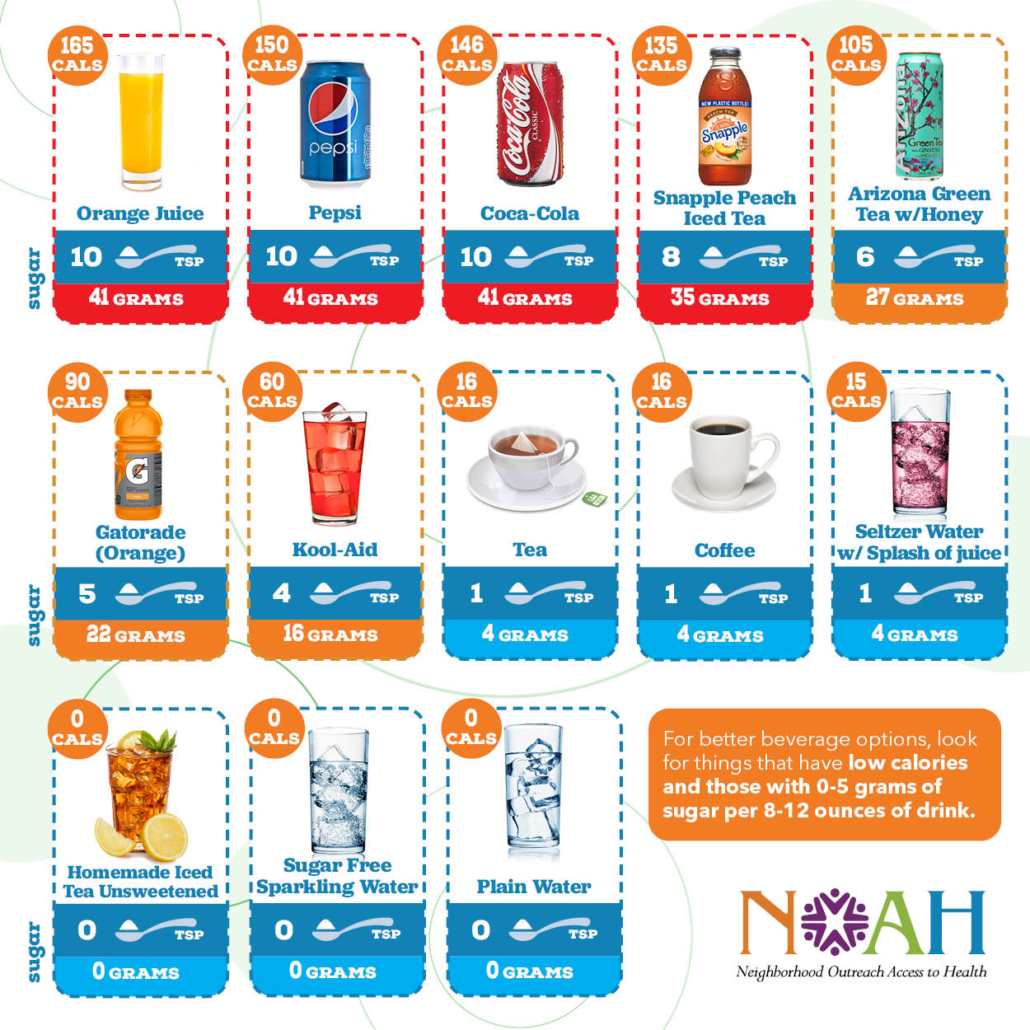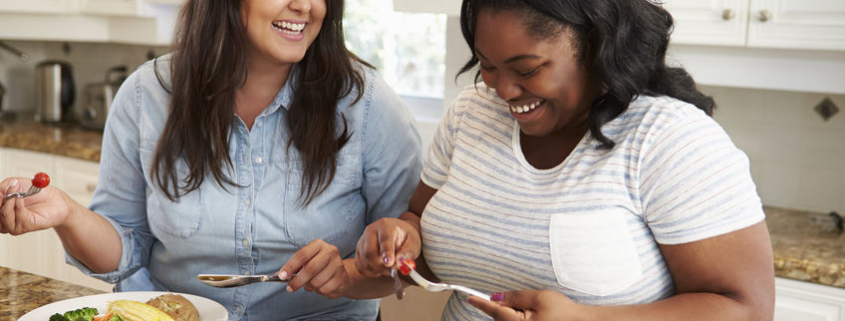Healthy Eating Tips for Living with Diabetes
Diabetes can be managed and treated with medicine and changes to what you eat and drink. People living with diabetes need to give their body a little help by being proactive.
For someone diagnosed with diabetes or at risk of developing diabetes, making changes to what and how much food they eat can have a big impact. These tips will help people make good decisions about what to eat and how much to eat.
Tip #1 – Portions Matter
In a lot of ways, portions can be deceiving. Larger portions at restaurants and even larger plates in our own kitchens can mislead people about how big their portions should be. A few decades ago, the average American dinner plate was nine inches, today they average around 12 inches.

When you plan out your meals and snacks, a good way to measure the portions is using your hand or basic measuring cups. Here are some examples:
- The palm of your hand is a good measurement for meat, seafood, and poultry.
- A cupped hand, about ½ cup, is the right amount of pasta, potatoes, chips, and nuts.
- At least one heaping cup, or both hands cupped together, for vegetables like tomatoes, cucumbers, spinach, and more.
- For fats like butter or olive oil, use about a tablespoon per meal.
- About 1 cup, or a fist, is the amount of milk, fruit, rice, beans, soups, yogurt.
Tip #2 – Swap Your Proteins
Protein is an essential part of a healthy diet. The types of proteins eaten, though, are not all the same in their health benefits. Keep the portions from above – about the size of the palm of your hand – and consider which proteins are best.
| Best Proteins | Protein to Limit |
| Chicken | Filet mignon |
| Turkey/lean ground turkey | Porterhouse |
| Pork Sirloin | Rib eye steak |
| Fish (not breaded or fried) | Ribs |
| Shrimp | Pork belly |
| Crab | Hotdogs |
| Tofu or soy | Bacon |
| Yogurt (low sugar or plain) | Chorizo |
| Eggs (max 7 yolks/week) | Corned beef |
| Low fat (93/7) ground beef | Pastrami |
| Lean beef cuts – names with “loin” or “round” | Any fired or breaded meat, chicken or fish |
| Beans and lentils |
Tip #3 – Feel Free to Snack
Snacks are good! Don’t deprive yourself of nutritious, energy-boosting snacks, especially when you are living with diabetes. There are plenty of ways to enjoy something mid-day without sacrificing health or flavor.
The important thing about a well-chosen snack is that it can be both filling and nutritional. A few snack-specific tips:
- Think of snacks like mini meals when it comes to portions.
- Do not snack when bored or while multitasking.
- Snacking shouldn’t be an everyday habit.
- Only eat snacks when you are hungry.
If a snack is needed to prevent low blood sugars, talk about this with your doctor or provider.
Here are a few good snack options for you to try.

Tip #4 – Not all Drinks are Equal
Don’t let what you drink ruin your day. The best drink is always water. It has no calories, carbohydrates, or sugar, and your body will thank you for drinking plenty of water every day. Sometimes, though, we all want something a little different, with a little more flavor.
Many drinks from restaurants or grocery stores are full of a surprising amount of sugar, calories, and carbohydrates. Some ways to take control:
- Bring your own drink. Whether it is water, coffee, or something else, if you bring your own with you, you won’t be buying something that could have high amounts of sugar and calories.
- Instead of getting pre-sweetened tea, get unsweetened tea and add your own – much less – sugar, or natural substitutes to sweeten it.
- Juice can be loaded with sugar and carbohydrates. Consider eating a piece of fruit instead. If it must be fruit juice, cut the juice with water and strictly limit the amount you drink.
- Coffee and tea lattes and similar type drinks taste so good and may appear a safe choice – tea is healthy, right – but how these drinks are made changes whether they are a healthy option. Limit sugar, creamer and syrups added.
- Smoothies can be a healthy and efficient way to get loads of fruit, which is an important part of a healthy lifestyle. Don’t rely on store-bought, pre-packaged smoothies to be low in sugar or carbs, though.
- Soda, pop, Coke, no matter how you say it, these drinks are loaded with sugar. In fact, a regular soda can have more sugar than two servings of ice cream!

Getting a diabetes diagnosis can be a big transition for the person diagnosed and their family. Working with your doctor, healthcare provider, nutritionist, family, and support system together will make changes easier to stick to and improve your health. For more tips on living with diabetes from NOAH, click here.






